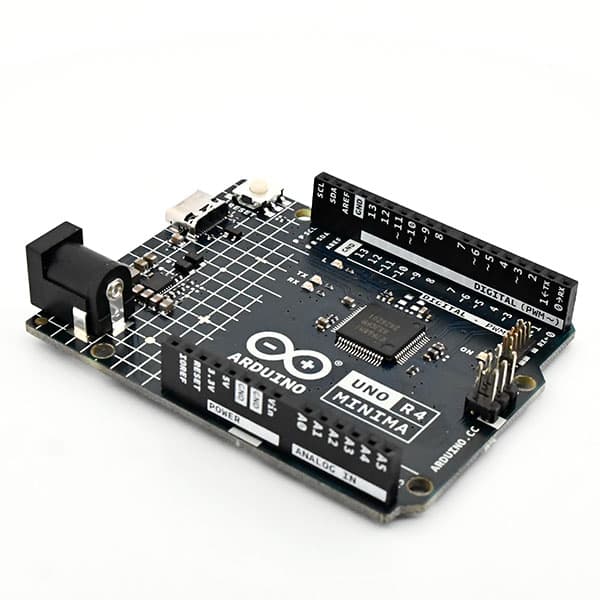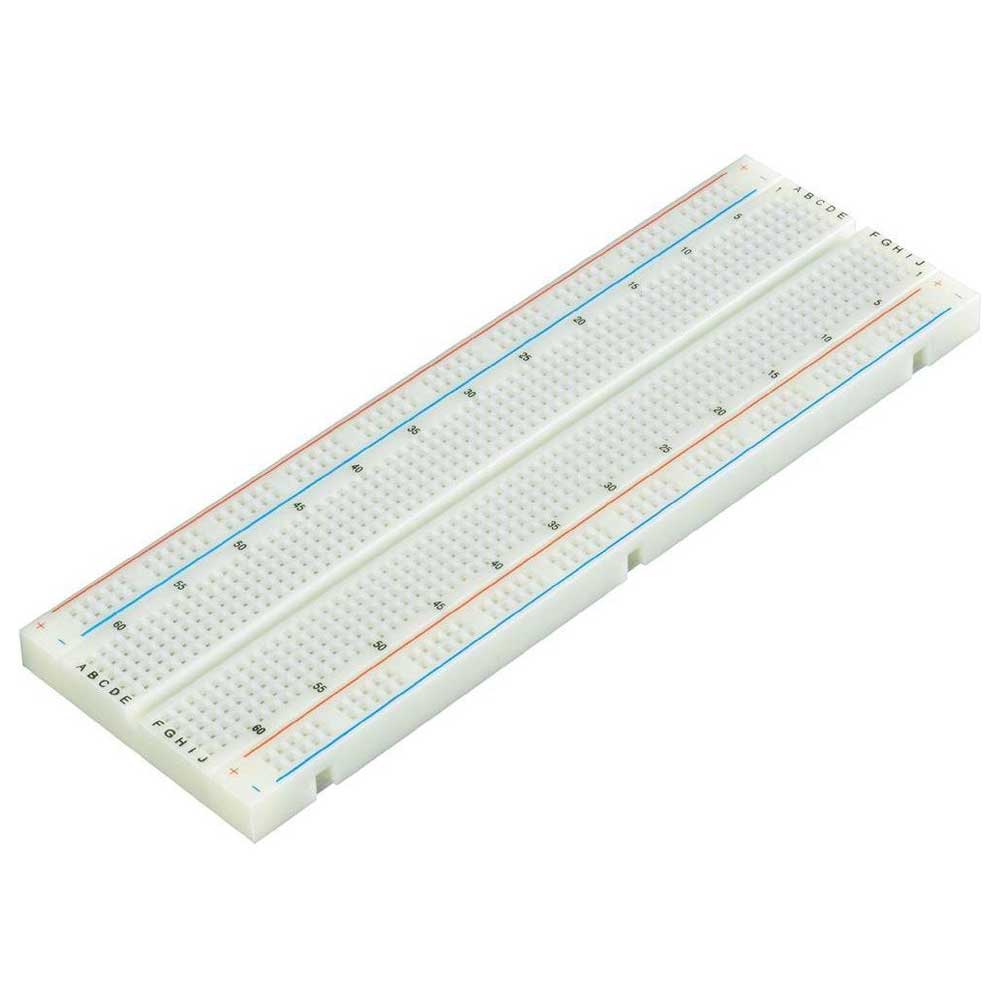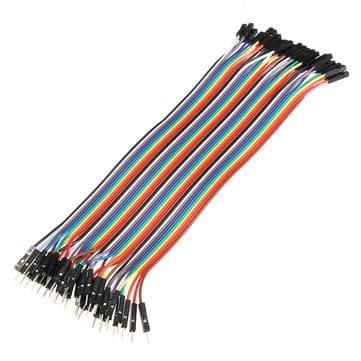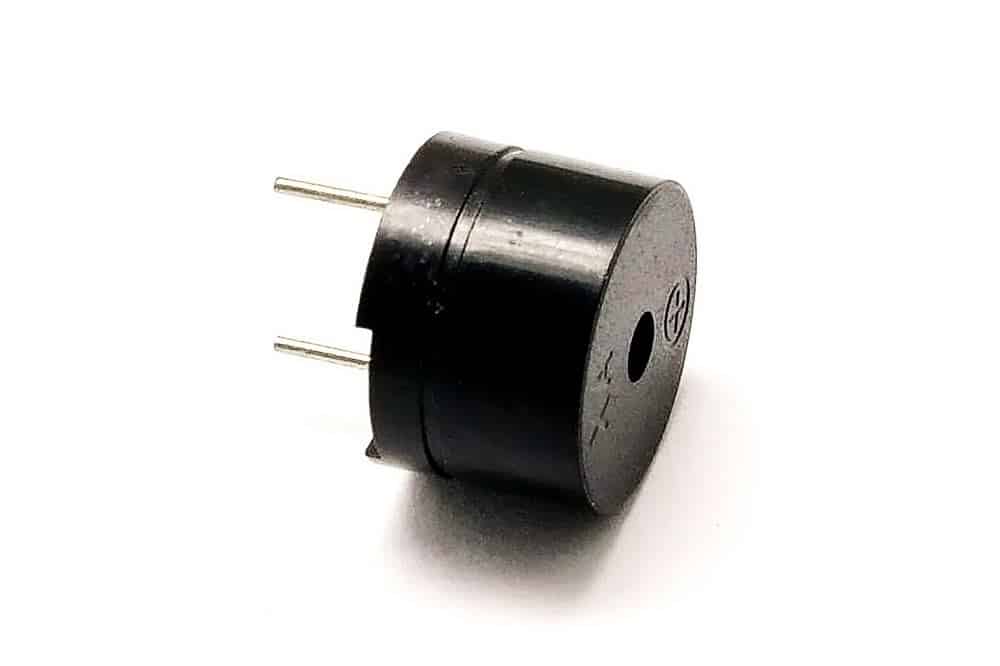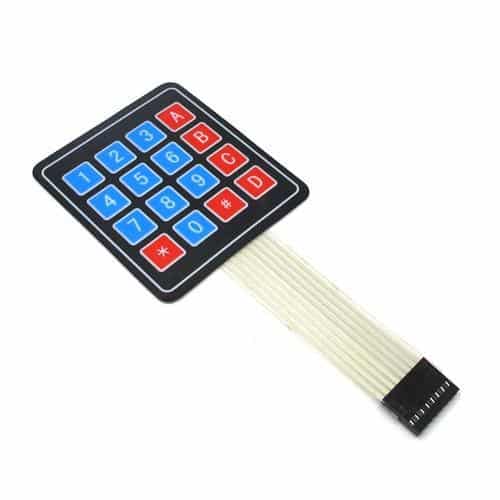5182+ reviews
Order by 16:00 for same day shipping
14 days return
EN
Individual
Business
Arduino Project: Piezo Piano
In this project I will show you how to make an Arduino piezo piano yourself.
With this simple and cheap project you can demonstrate very quickly how a keypad works on the Arduino. In this project we use an Arduino UNO, a breadboard and a digital 4x4 keypad.
Building and Wiring
Now we're going to put the project together.
We start by connecting the keypad to the Arduino. You do this in a specific order: The first 4 pins go into digital ports 4 to 7, the last 4 ports go into digital 0 to 3. You connect these using the jumpers, directly into the UNO.
After you have connected the keypad you can place the buzzer on the breadboard. On the Buzzer there is a plus, you loop that via the breadboard and a jumper wire to port 11 on the Arduino. The minus you connect to a random GND port on the UNO.
See all this also via the attached Fritzing.

Programming
/*Elektronicavoorjou.nl Project Piezo piano
Benodigdheden
Arduino Uno
10 M/M Jumper wires
1 Breadboard
1 Piezo buzzer
4*4 Keypad*/
#include ”Keypad.h”
#include “pitches.h”
#define GND 12
const byte ROWS = 4; //Aantal rijen
const byte COLS = 4; //Aantal kolommen
const int SPEAKER=11;
//defineer symbolen op keypad
char hexaKeys[ROWS][COLS] = {
{‘1′,’2′,’3′,’A’},
{‘4′,’5′,’6′,’B’},
{‘7′,’8′,’9′,’C’},
{‘*’,’0′,’#’,’D’} };
byte rowPins[ROWS] = {3, 2, 8, 0}; //connect rij naar pinouts op keypad
byte colPins[COLS] = {7, 6, 5, 4}; //connect kolom naar pinouts op keypad
//initialize instance genaamd NewKeypad
Keypad customKeypad = Keypad( makeKeymap(hexaKeys), rowPins, colPins, ROWS, COLS);
void setup()
{
Serial.begin(9600);
pinMode(GND,OUTPUT);
digitalWrite(GND,LOW);
}
void loop()
{
char customKey = customKeypad.getKey();
if (customKey==’0′)
{
Serial.println(customKey);
tone(SPEAKER,NOTE_C4,350);
}
if (customKey==’1′)
{
Serial.println(customKey);
tone(SPEAKER,NOTE_D4,350);
}
if (customKey==’2′)
{
Serial.println(customKey);
tone(SPEAKER,NOTE_E4,350);
}
if (customKey==’3′)
{
Serial.println(customKey);
tone(SPEAKER,NOTE_F4,350);
}
if (customKey==’4′)
{
Serial.println(customKey);
tone(SPEAKER,NOTE_G4,350);
}
if (customKey==’5′)
{
Serial.println(customKey);
tone(SPEAKER,NOTE_A4,350);
}
if (customKey==’6′)
{
Serial.println(customKey);
tone(SPEAKER,NOTE_B4,350);
}
if (customKey==’7′)
{
Serial.println(customKey);
tone(SPEAKER,NOTE_C5,350);
}
if (customKey==’8′)
{
Serial.println(customKey);
tone(SPEAKER,NOTE_D5,350);
}
if (customKey==’9′)
{
Serial.println(customKey);
tone(SPEAKER,NOTE_E5,350);
}
if (customKey==’A’)
{
Serial.println(customKey);
tone(SPEAKER,NOTE_F5,350);
}
if (customKey==’B’)
{
Serial.println(customKey);
tone(SPEAKER,NOTE_G5,350);
}
if (customKey==’C’)
{
Serial.println(customKey);
tone(SPEAKER,NOTE_A5,350);
}
if (customKey==’D’)
{
Serial.println(customKey);
tone(SPEAKER,NOTE_B5,350);
}
if (customKey==’*’)
{
Serial.println(customKey);
tone(SPEAKER,NOTE_C6,350);
}
if (customKey==’#’)
{
Serial.println(customKey);
tone(SPEAKER,NOTE_D6,350);
}
}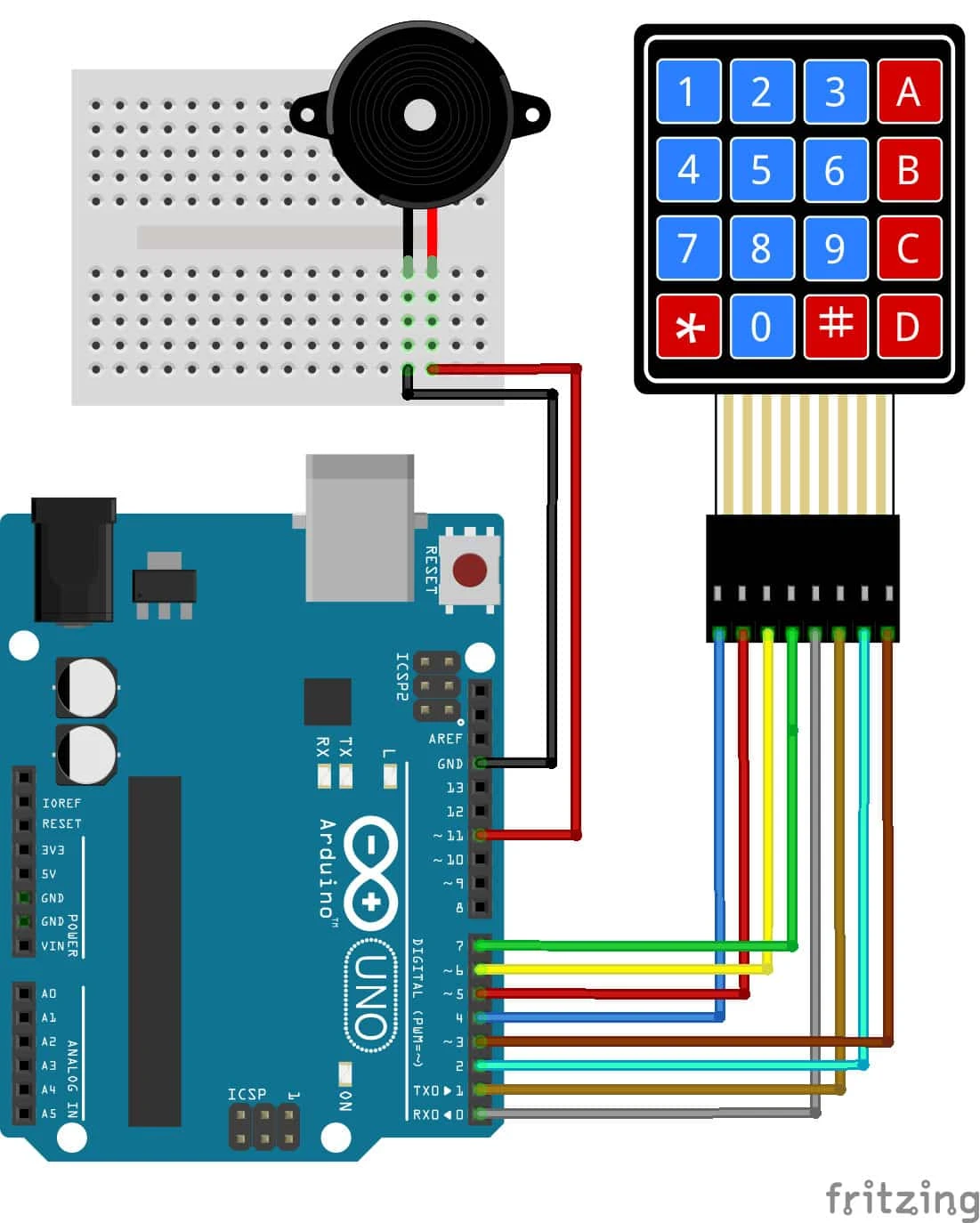
/*************************************************
* Public Constants
*************************************************/
#define NOTE_B0 31
#define NOTE_C1 33
#define NOTE_CS1 35
#define NOTE_D1 37
#define NOTE_DS1 39
#define NOTE_E1 41
#define NOTE_F1 44
#define NOTE_FS1 46
#define NOTE_G1 49
#define NOTE_GS1 52
#define NOTE_A1 55
#define NOTE_AS1 58
#define NOTE_B1 62
#define NOTE_C2 65
#define NOTE_CS2 69
#define NOTE_D2 73
#define NOTE_DS2 78
#define NOTE_E2 82
#define NOTE_F2 87
#define NOTE_FS2 93
#define NOTE_G2 98
#define NOTE_GS2 104
#define NOTE_A2 110
#define NOTE_AS2 117
#define NOTE_B2 123
#define NOTE_C3 131
#define NOTE_CS3 139
#define NOTE_D3 147
#define NOTE_DS3 156
#define NOTE_E3 165
#define NOTE_F3 175
#define NOTE_FS3 185
#define NOTE_G3 196
#define NOTE_GS3 208
#define NOTE_A3 220
#define NOTE_AS3 233
#define NOTE_B3 247
#define NOTE_C4 262
#define NOTE_CS4 277
#define NOTE_D4 294
#define NOTE_DS4 311
#define NOTE_E4 330
#define NOTE_F4 349
#define NOTE_FS4 370
#define NOTE_G4 392
#define NOTE_GS4 415
#define NOTE_A4 440
#define NOTE_AS4 466
#define NOTE_B4 494
#define NOTE_C5 523
#define NOTE_CS5 554
#define NOTE_D5 587
#define NOTE_DS5 622
#define NOTE_E5 659
#define NOTE_F5 698
#define NOTE_FS5 740
#define NOTE_G5 784
#define NOTE_GS5 831
#define NOTE_A5 880
#define NOTE_AS5 932
#define NOTE_B5 988
#define NOTE_C6 1047
#define NOTE_CS6 1109
#define NOTE_D6 1175
#define NOTE_DS6 1245
#define NOTE_E6 1319
#define NOTE_F6 1397
#define NOTE_FS6 1480
#define NOTE_G6 1568
#define NOTE_GS6 1661
#define NOTE_A6 1760
#define NOTE_AS6 1865
#define NOTE_B6 1976
#define NOTE_C7 2093
#define NOTE_CS7 2217
#define NOTE_D7 2349
#define NOTE_DS7 2489
#define NOTE_E7 2637
#define NOTE_F7 2794
#define NOTE_FS7 2960
#define NOTE_G7 3136
#define NOTE_GS7 3322
#define NOTE_A7 3520
#define NOTE_AS7 3729
#define NOTE_B7 3951
#define NOTE_C8 4186
#define NOTE_CS8 4435
#define NOTE_D8 4699
#define NOTE_DS8 4978This code works but needs some adjustments to function ideally.
We leave this up to you because then you will actually be doing the programming yourself!
